
The Emerging Water Technology Symposium (EWTS) has enjoyed a history of great events, dating back to the inaugural back in 2008. Since then this important industry event has been convening every two years to tackle important issues facing the plumbing and water industries by taking a close look at the technologies being developed to meet those challenges. With issues such as water quality, scarcity, and sustainability continuing to be growing challenges throughout the United States and across the globe, this year’s EWTS was primed to once again to be the gathering place of some of the brightest minds and innovative technologies aimed at dealing with these real-world issues.
Like most important things, the EWTS is presented with a great amount of effort from a small army of people aimed at making every aspect of the event a success. In order to make the EWTS a reality, staff from across three co-convening organizations pool their talent and resources to plan every detail, from logistics to the technical program itself. Seeing the great value this event brings to the industry, the American Society for Plumbing Engineers (APSE), Plumbing Manufacturers International (PMI), and IAPMO commit their teams to planning each EWTS, which takes about a year and a half to plan from start to finish.
In addition to a logistics team that manages all of the details necessary for the event to run smoothly, from finding a venue, planning meals, and working with the hotel onsite to make sure everything goes smoothly, there is a technical committee that plans the actual technical program. This year, the technical committee selected a theme to serve as the backbone for the program and to provide some direction for the types of discussions in which it wanted attendees to participate. After much discussion of the issues and hardships that are being experienced in a great many areas, “The Nexus Between Safety and Sustainability” was selected to serve as the focus of the 2024 EWTS. While both safety and sustainability are of vital importance, sometimes the efforts to achieve one has an impact on the other. As a result, the technical committee focused on presentations that would help address how to balance issues related to both of these goals.
To lead off each day of this two-day event, a keynote presentation was given. The EWTS was excited to welcome Sarah Porter, director of the Kyl Center for Water Policy at Arizona State University, to get the sustainability discussion going with a presentation on the water scarcity issues facing the state of Arizona and how they have been trying to meet those challenges on a statewide and local level. Will Sarni, founder and CEO of Water Foundry, provided the keynote presentation for day two, focusing on innovation in decentralized and extreme decentralized technologies.
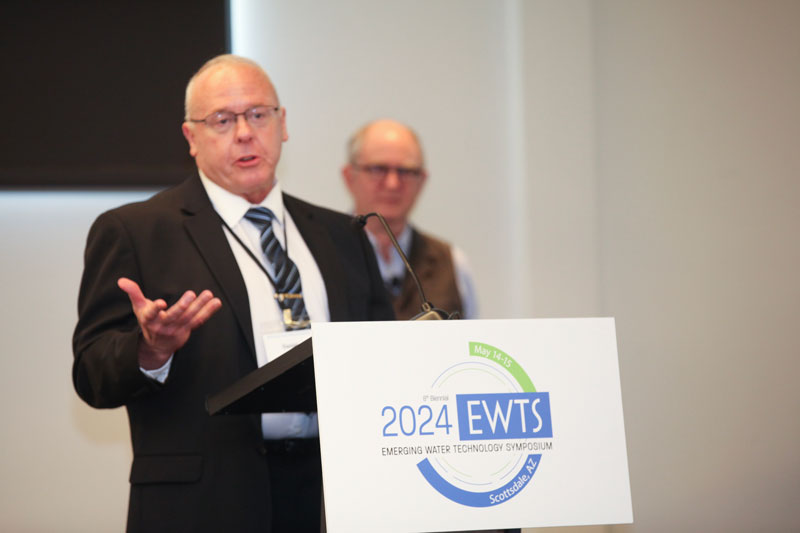
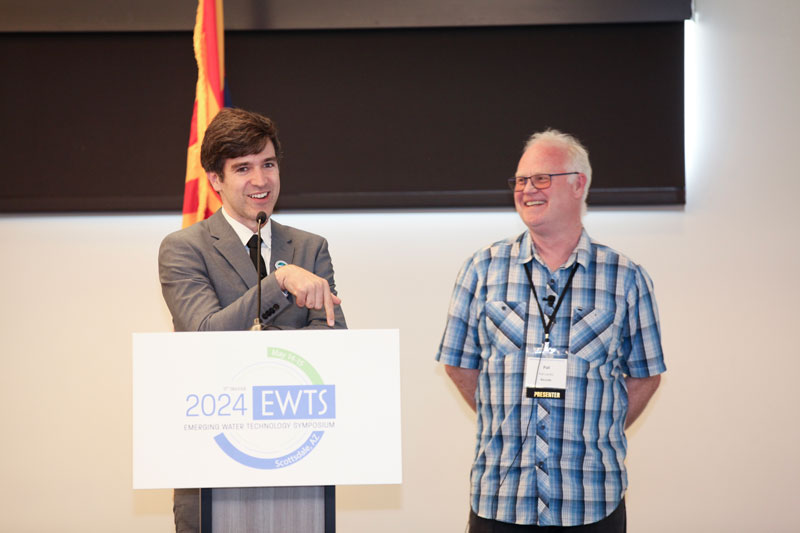

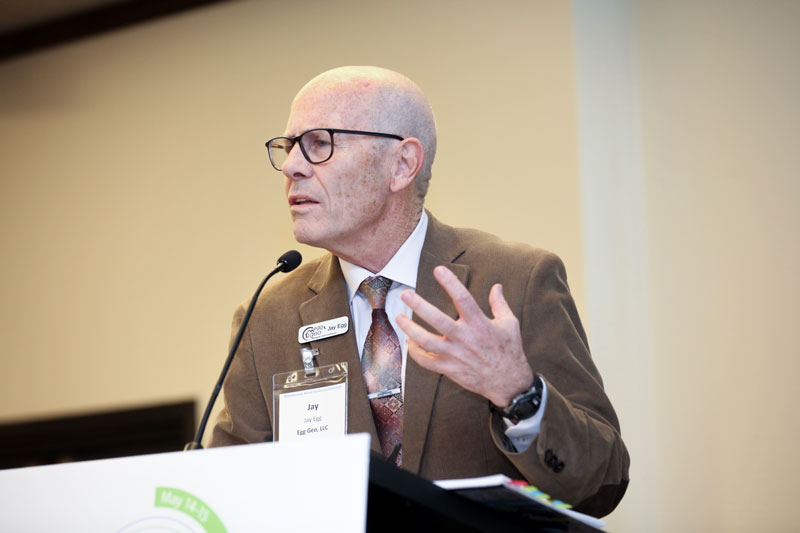
PHOTOS BY BRIAN GADBERY
As day one progressed, attendees were treated to presentations throughout the morning that focused on the sustainability side of the EWTS theme. Joe Fazio (Flume) and Andrew Pirrone (City of Goodyear, Arizona) discussed the use of lead detection technology to combat water loss. Dave Crawford (ARCSA) discussed the use of rainwater harvesting systems as a decentralized onsite water source. A discussion on the technology and economics of onsite water reuse strategies was provided by Eric Hough from Epic Cleantec. Other organizations were also part of discussions such as WaterSense, represented by Jonah Schein, who discussed saving energy and reducing carbon with WaterSense labeled homes. Also along the water/energy nexus discussions was Gregg Semler, CEO and founder of InPipe Energy, who discussed a pressure management approach to decarbonization and achieving net zero goals. Rounding out the morning was Jay Egg, Egg Geo, LLC., and a discussion of the utilization of geothermal sources to save water.
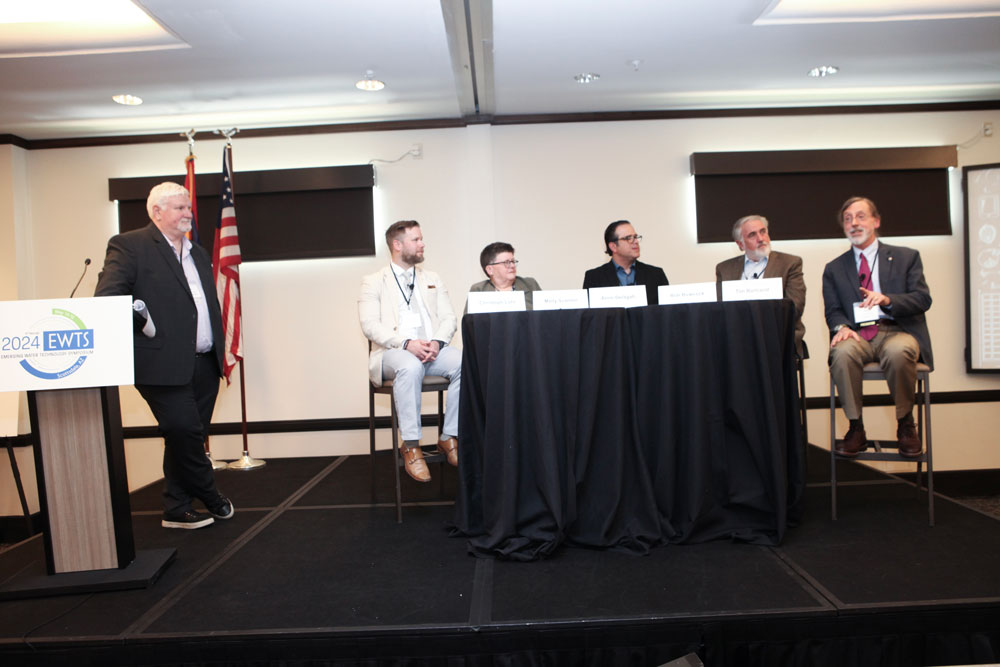
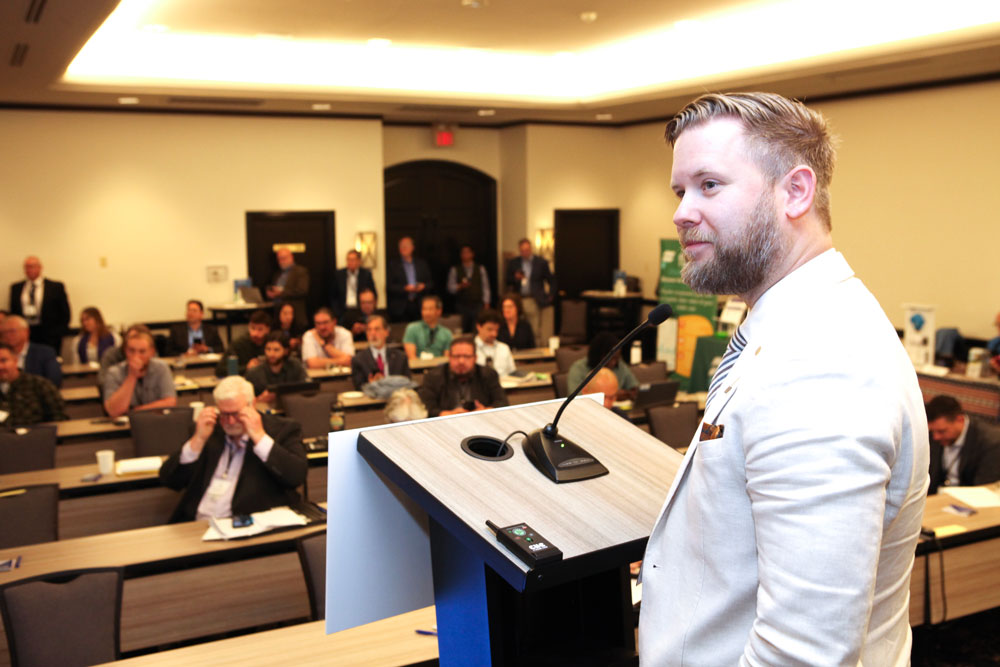
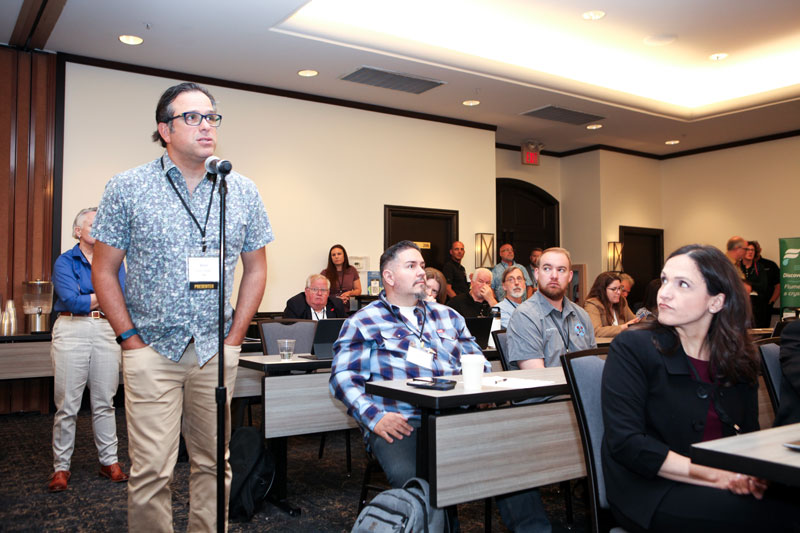
PHOTOS BY BRIAN GADBERY
The afternoon session on the first day of the EWTS started with Bob Bowcock from Integrated Resource Management, who provided an overview of emerging contaminants regulated under various environmental acts and their implications for plumbing systems. Neal Megonnell of Aqueous Vets detailed the installation of the largest ion exchange PFAS removal plant in the United States by the Yorba Linda Water District. Pat Lando (Recode) and John Lansing (PAE) presented a case study on urine recycling as a solution for decarbonizing cities and agriculture and discussed the eco-sanitation design principles, regulatory considerations, and the feasibility of implementing circular sanitation systems in urban environments, emphasizing sustainability benefits. Eric Yeggy (Water Quality Association) focused on point-of-use and point-of-entry water treatment technologies designed to remove PFAS from drinking water. Dr. Abraham Cullom (Special Pathogens Laboratory) examined the complex interactions between premise plumbing materials and opportunistic premise plumbing pathogens (OPPPs). To round out a very busy first day, Natascha Milesi-Ferretti from the National Institute of Standards and Technology (NIST) provided updates on plumbing hydraulics research, focusing on measuring pressure losses in plumbing fittings.
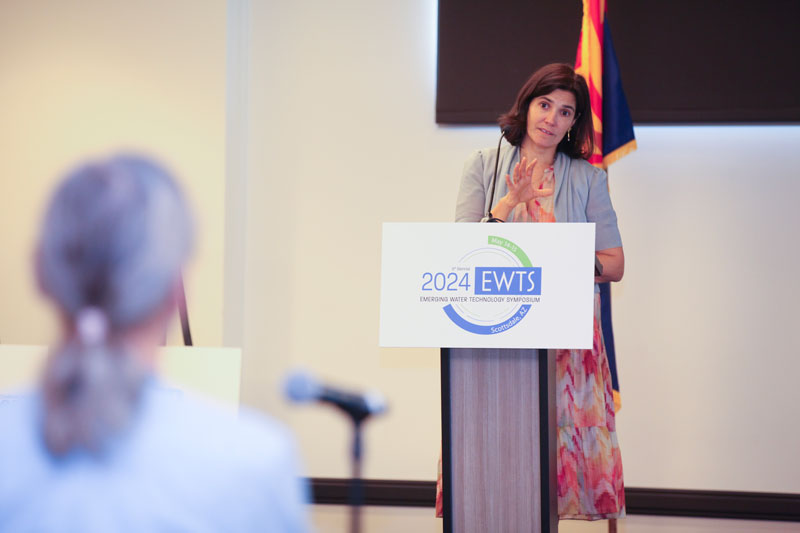
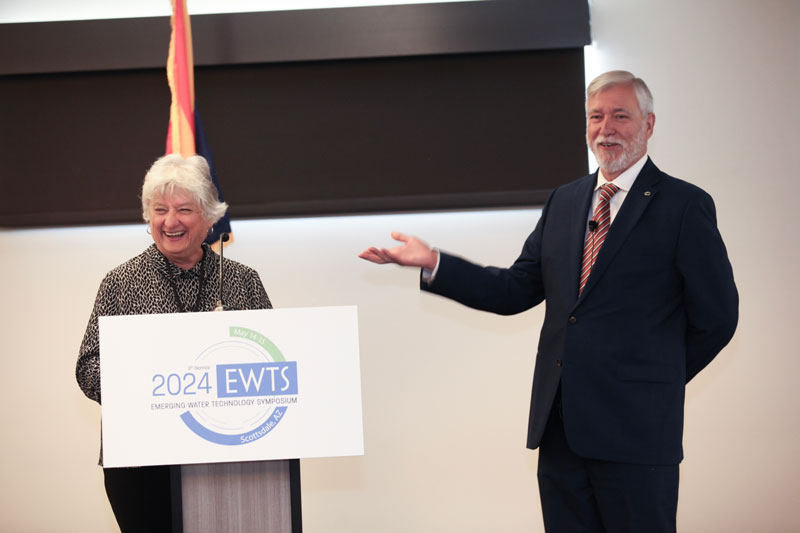

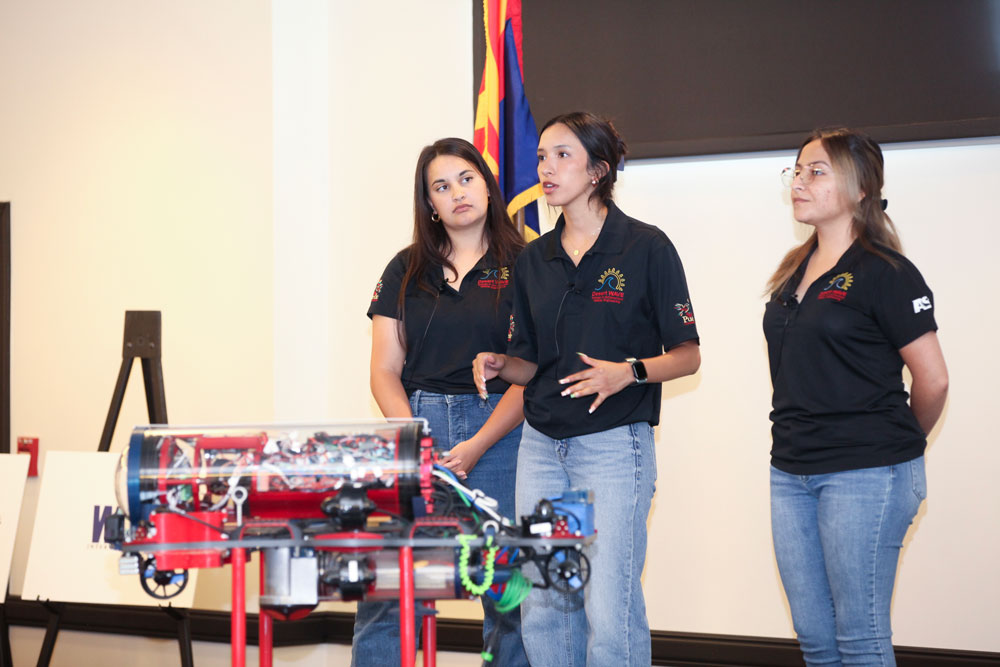
PHOTOS BY BRIAN GADBERY
Following Sarni’s keynote to start day two, the symposium continued with a strong lineup of presentations addressing this year’s theme. Nick Fleckney (Mott MacDonald) presented virtually from New Zealand and addressed challenges in modernizing sanitary drainage systems to accommodate reduced water volumes and prevent system disruptions. Charles White (PHCC) discussed integrating sustainability into plumbing apprenticeships to meet future industry needs. Gary Klein (Gary Klein Associates) and Dan Cole (IAPMO) highlighted strategies for optimizing water and energy efficiency in decentralized systems and hot water distribution. Amin Delagah (TRC Companies) presented findings on mixing and balancing valves to improve water system efficiency and performance. Dr. Tim Bartrand (ESPRI) summarized goals for ensuring safe and efficient water quality in building systems through science-based approaches. To round out the morning session, Mary Ann Dickinson (Dickinson and Associations) and Pete DeMarco (IAPMO) discussed research on the unintended consequences of indoor water efficiency, advocating for balanced regulatory approaches.
After lunch, the 2024 EWTS featured an innovative product showcase as a new addition to the event. This showcase provided a closer look at specific technologies that are aimed at helping to solve the issues the EWTS tackles. The EWTS was concluded with an interactive panel discussion that tied everything together to discuss how a balance can be found between water quality and safety, as well as water conservation and resiliency. Participating in the panel were Dr. Tim Bartrand, ESPRI; Bob Bowcock, IRM; Amin Delagah, TRC; Christoph Lohr, IAPMO; and Dr. Molly Scanlon, University of Arizona, all of whom provided a variety of perspectives and unique expertise for a robust conversation.
Over the years, the EWTS has enjoyed a high level of success in bringing the various stakeholders in the water industry together to have important discussions that don’t happen anywhere else. This year’s event in Scottsdale was no different, with presenters and attendees from around the world discussing potential solutions to sustainability and safety issues and how to avoid the unintended consequences that can come with both.
Tony Marcello
Last modified: September 1, 2024
